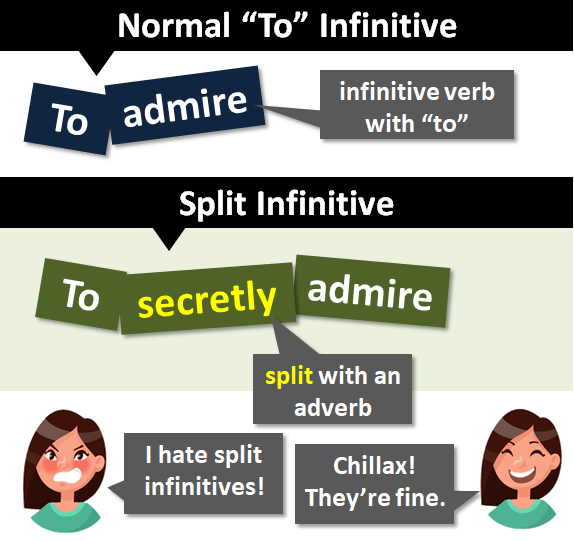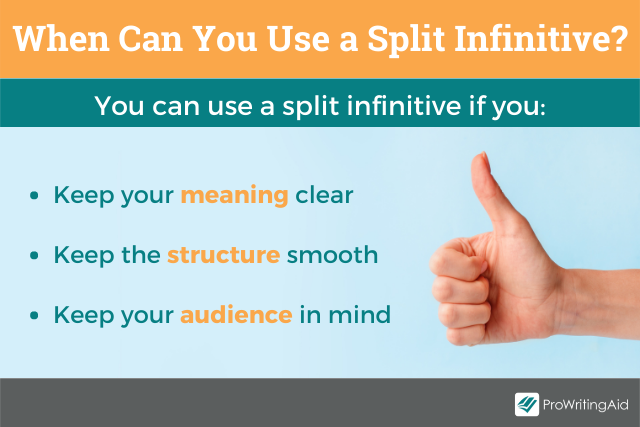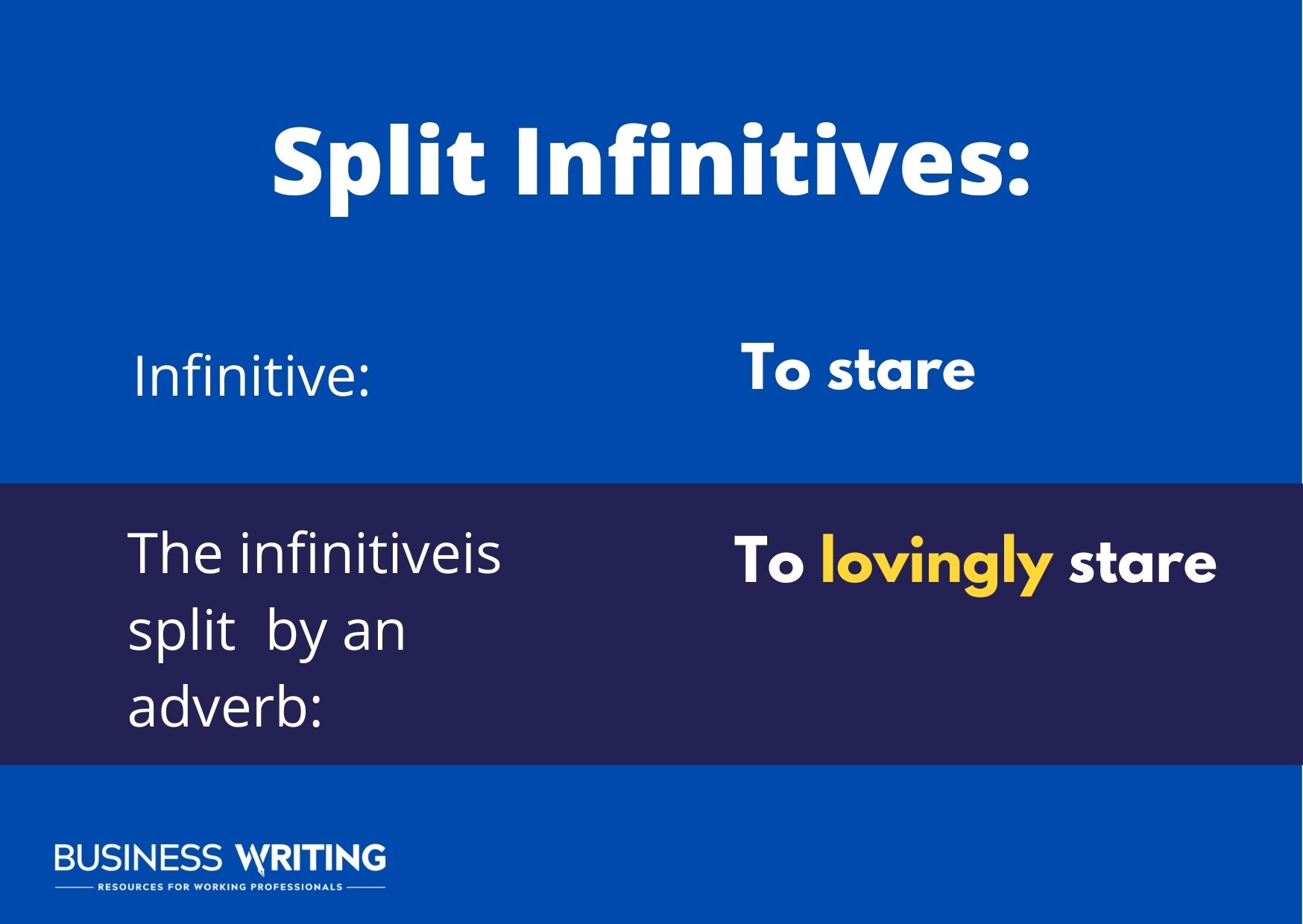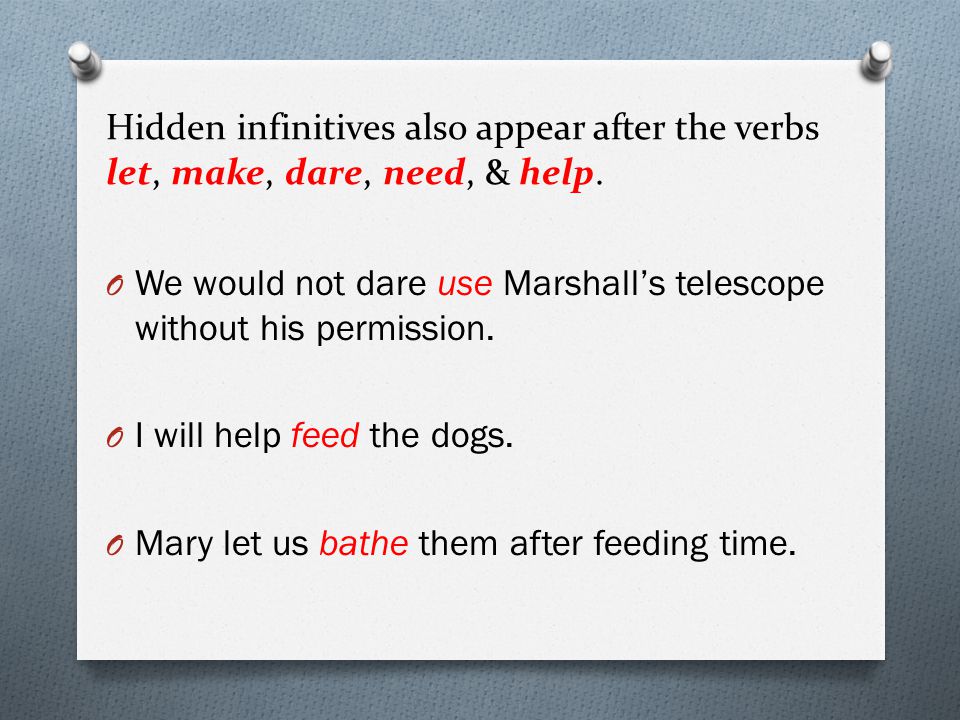Beautiful Work Tips About How To Spot A Split Infinitive

They seem to really enjoy their new.
How to spot a split infinitive. An infinitive is split when something separates the main verb from its “to.” few grammatical items have received a rougher rap. Split infinitives, passive infinitives, and continuous infinitives. As with starting a sentence with a conjunction.
When an adverb appears between to and the verb itself, we get a split infinitive. A split infinitive is created when you put a word between the “to” and root verb, like this: Though split infinitives are discouraged by many style guides, they can.
For instance, “she began to quietly count the remaining money” becomes “she quietly began to. An infinitive consists of the word to and the simple form of a verb (e.g. It derives from the mistaken notion that the english verb consists in a single word that mustn’t be.
To split or not to split the infinitive? In english grammar, the split infinitive is a phrase that places an adverbial modifier in between a preposition and a verb. Split infinitives are when you take an adverbial phrase and insert it in between an infinitive.
A common way to fix a split infinitive is to move the adverb to another position in the sentence. Sometimes it is very clear that splitting an infinitive is a good choice. When a writer or speaker puts another word, often an adverb, between the two parts of the full infinitive, he.
To go and to read ). A split infinitive happens when an adverb or other modifier is placed between “to” and the verb. When a word is inserted in between the “to” and the verb, the phrase becomes a split infinitive.


















